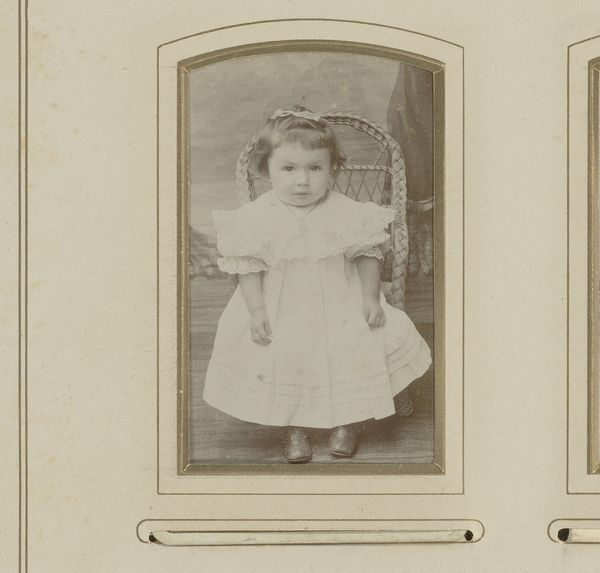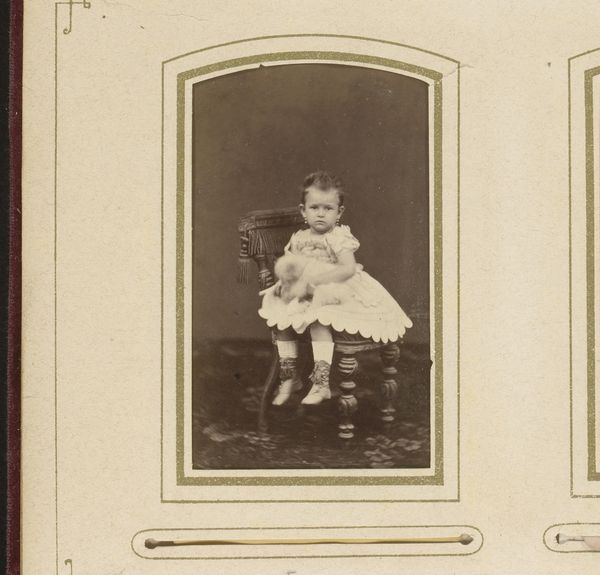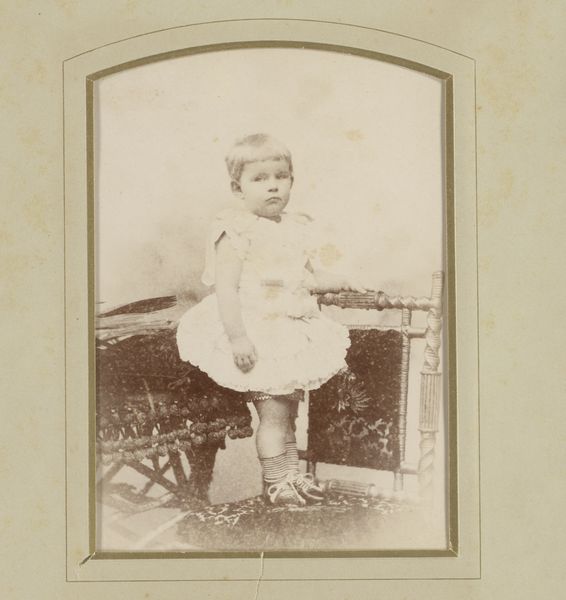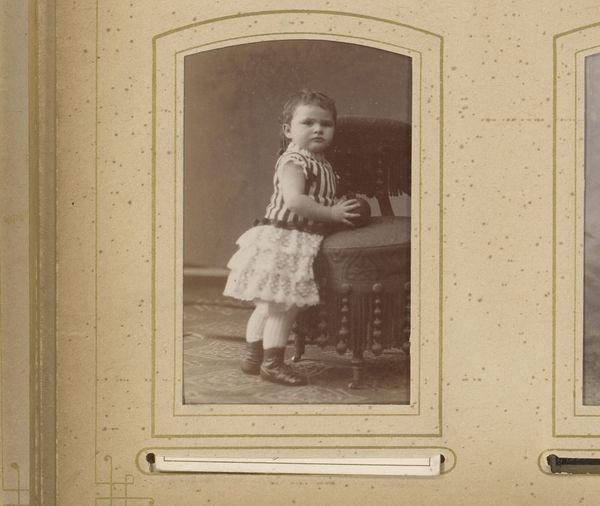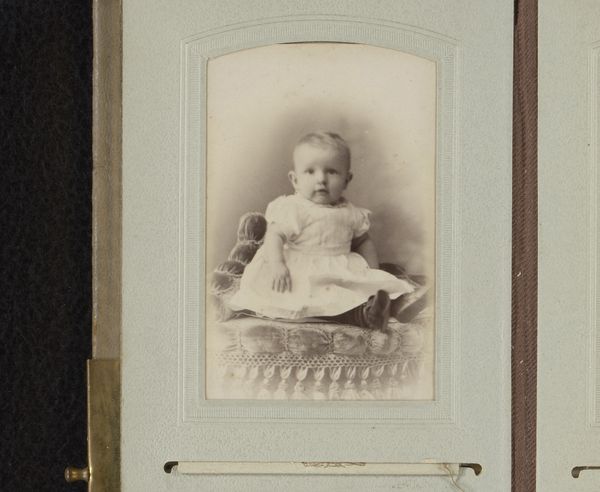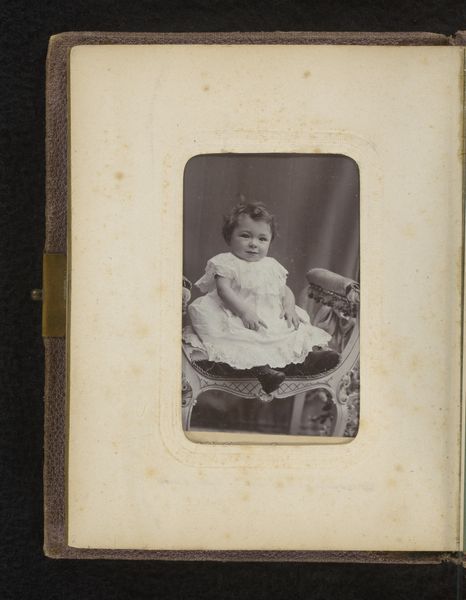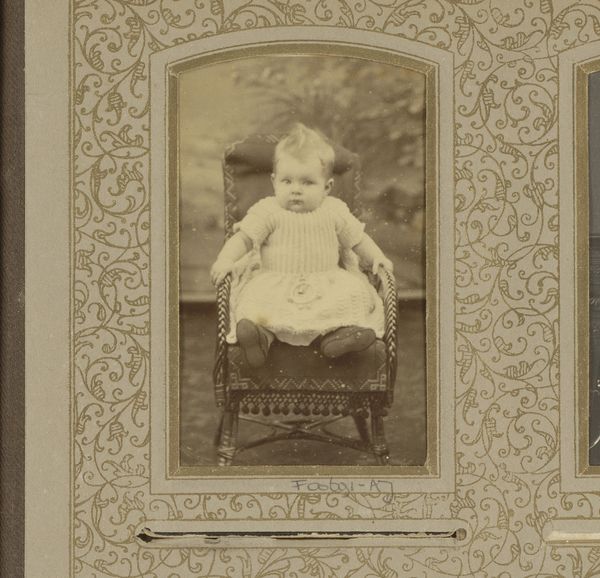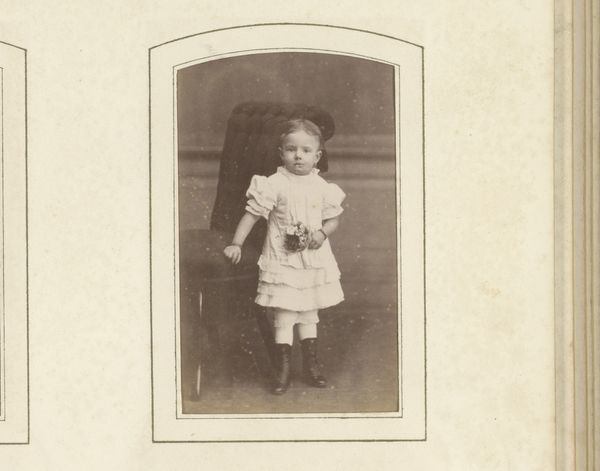
photography, gelatin-silver-print
#
portrait
#
photography
#
gelatin-silver-print
#
genre-painting
#
watercolor
Dimensions: height 84 mm, width 51 mm
Copyright: Rijks Museum: Open Domain
Editor: Here we have Albert Greiner's "Portret van Tootje Roos als peuter," a gelatin-silver print made sometime between 1883 and 1887. I'm immediately struck by the formal nature of the portrait, yet the little girl's expression is so innocent. What can you tell me about this work? Curator: This piece is fascinating when viewed through a materialist lens. Consider the labour involved in creating this image: not just the photographer’s, but the crafting of the child’s dress, the woven basket of flowers. How were these materials sourced, produced, and consumed within the context of late 19th-century Dutch society? Editor: That's interesting, I hadn’t considered that! So, it's not just about the *image* itself, but about the processes that brought it – and everything *in* it – into being? Curator: Precisely. The gelatin-silver print itself is a product of industrial chemistry and photographic technology that required resources, specialized knowledge and labor. Who had access to this technology, and how did its use shape social representation? How does it connect with social class, labor conditions, and economic structures of the period? Editor: So the very act of making this portrait speaks to a certain level of industrialization and access to resources at that time? What do you think it tells us about gender? Curator: Yes, absolutely! And what is the significance of depicting the child in this manner? Think about the clothing, its production, and who benefitted from that process, especially viewed alongside the rise of photography as a commercial and artistic endeavor. What new methods of social display became accessible? Editor: That perspective really opens up new avenues of interpretation for what seemed at first a very straightforward portrait. I see now how the focus on material processes reveals hidden layers of meaning and social commentary. Curator: Exactly. By analyzing these aspects, we move beyond the surface image to understand the complex network of materials, labor, and social forces at play.
Comments
No comments
Be the first to comment and join the conversation on the ultimate creative platform.


